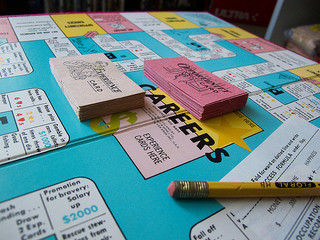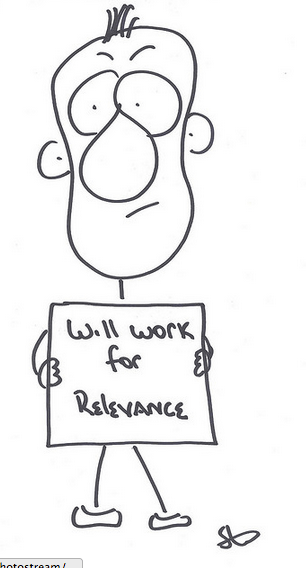Letting Go of Certainty
Creativity, courage, and uncertainty is integral both to joyous opportunity and painful struggle in education and in life.
While uncertainty has always been part of life, the changing nature of work is cause for parents and educators to pause and consider potentially seismic shifts in the ways in which students in our schools today will one day experience work. Differences in generational attitudes toward work are already substantial.
To put shifts into perspective:
- From about 1880 to 1980, having a good job meant being an employee of a particular company for many years, perhaps even for a lifetime. (The Economist, There’s an App for That, Jan 3, 2015)
- Generation X (people born between 1961 and 1981) have experienced the end of the expectation of a job for life. (Forbes, Where the Money’s At: The Fastest Growing Sectors for the Self Employed, Meghan Casserly, 8/22/2013)
- 60% of Millenials (people born between early 1980’s and early 2000’s) are leaving their companies in less than three years and 45% would prefer more flexibility to more pay. (Forbes, Why Millenials are Ending the 9 to 5, Kate Taylor, 8/23/2013)
Many today aspire to a freelance lifestyle, qustioning the nature of having a traditional job at all. (Is the Era of Mass Manufacturing Coming to An End, Peter Acton, Harvard Business Review, December 5, 2014) A recent study by the freelancers union, a group promoting the interests of independent workers, suggests that 1 in 3 members of the American workforce (and a higher proportion of younger people) do at least some freelance work. (The Economist, There’s an App for That, Jan 3, 2015)
Knowledge and creative companies, demanding ideas rather than labor and services, are subject to the same forces promoting freelancing as the industrial and service economies. Topcoder can undercut its rivals by 75% by chopping projects into bite-sized chunks and offering them to its 300,000 freelance developers in 200 countries as a series of competitive challenges. InCloudCounsel undercuts big law firms by as much as 80% using freelance lawyers to process legal documents for a flat fee. Innocentive has turns companies’ research needs into specific problems and pays for satisfactory solutions to them. Quirky operates as a next-gen manufacturer and R & D firm whose global online community of about 800,000 people submit, vote and fine-tune potential inventions. Quirky then manufactures, packages and sells promising ideas at retailers such as Home Depot and Best Buy as well as directly on Quirky.com. (The Economist, There’s an App for That, Jan 3, 2015)
With all the uncertainty, there is creative potential difficult for members of previous generations to imagine. Vocation, avocation, work, and leisure combine and expansive options for crafting a life of joy and meaning, albeit with less security.
Among the most inspiring innovative endeavors for me is E-Nable, which I learned about at the World Maker Faire this past fall. Created by Jon Schull, a researcher at Rochester Institute of Technology, e-NABLE pairs children and adults with missing or deformed fingers, hands or forearms with makers who produce customized 3D printed prostheses. Making a huge impact with little more than 3D printers, open source product design, and the intelligence, passion, time, and good will of a growing cadre of volunteers, E-Nable has cut the cost of prosthetic limbs from tens of thousands of dollars to a mere $50 a limb. The organization went in 2014 alone from 200 members to more than 3200, and a recent $600,000 grant from google will enable E-nable to do so much more.
For me, E-Nable models the potential for balance between knowing and doing; thinking and making, with a focus on being impactful in the real world. There are certainly many other models we can share with our students, assisting them to consider how they might contribute through vocation or avocation. In the words of organizers of the Maker Impact Summit, held in December, 2013, “We are on the cusp of an opportunity to more fully tap into our creative potential, driven by significant technological innovation that is democratizing the means of production and enabling connections between resources and markets. Realizing this opportunity will require rethinking and redesigning all of our major institutions innovating the way we work, learn and consume.”
What are ways we might rethink and redesign learning experiences, supporting students to be courageous in letting go of certainty, finding creativity and meaning in the process?





